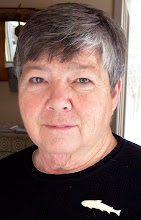I am confounded these days by the controversy over appropriateness of expression - verbal, musical, visual. ‘Politically Correct” is a term from the 1960s when it seemed especially necessary to correct a culture steeped in white male domination. Today the term is uttered in scorn, a javelin raised by arch-conservatives and aimed at liberals and intellectuals.
I resent the hijacking of historically appropriate intention but I confess that I see signs of hypersensitivity among minority groups and I can’t always find my own line between total agreement with the aggrieved versus a disbelieving “are you kidding me?” reaction.
“Showboat,” the landmark play written by Jerome Kern and Oscar Hammerstein and staged in 1927 was converted to film in 1951. The original lyrics were “cleaned up” to fit racial sensitivity of the times. “Old Man River” originally written as “n…….s all work on the Mississippi..” became “negroes all work…” then “colored folk work…” and finally in a contemporary version we saw just a year or two ago, the line sung was “some folks work…” Obviously, the “n” word is so emotionally loaded that except in contemporary rap, no one dare utter it.
Civil war monuments are the latest target in the effort to scrub history. I am on the side of sending them all to the “Closet of Shame." As a pacifist, I balk at any glorification of war - no matter what side anybody comes down on - and view all such statuary as little more than the promise the rest of society makes to young men: “go get yourself killed or maimed and we will put your name on a piece of marble or metal and thereby guarantee the eternal memory of a grateful nation.” Better that we promise money to the surviving family and seven virgins in the afterlife.
But what to say about art created by an African-American depicting important historic characters of the same race but protested by another African-American?
 |
| From the "Joy Cometh in the Morning" Suite |
Black painter Stephen Towns created a series of paintings and multi-media “quilts” re-telling the story of Nat Turner. Turner led the only significant uprising of slaves (1831). 55 - 65 whites were killed. Turner was caught and his hanged body dismembered as a warning to slaves to stay in their place. Traditional white history books depicts this leader as a traitor and butcher. In light of the facts of slavery, Turner must be given merits of leadership and bravery in mounting such a challenge.
Towns’ suite is titled “Joy Cometh In the Morning” and was installed this August in the art gallery at Goucher College in Baltimore. The first few paintings are beautiful, textural narratives; the darkness of the Nat Turner Uprising intensifies throughout the progressive pieces culminating in full-on portraits of six black revolt participants with nooses around necks staring eye to eye with the viewers.
 |
| "the Revolt" |
One employee at the Gallery complained that she simply could not carry on her work after walking past these paintings every day. The employee is an African-American woman. Rather than have the college and gallery director become embroiled in what could become a public “to-do”, Towns removed the six portraits himself, taping out blank spaces on the wall where the work originally hung.
Questions: should the gallery and college have allowed one employee to dictate what is displayed in the gallery? what if the images had been white? distasteful to a white employee? would the outcome have been different or any more or less justified? This was not the first viewing of this body of work so the director fully understood the power of the artist’ work. Should he/she have insisted that the paintings remain in place? After all, isn’t one of the roles of art holding a mirror of truth up for clear inspection? Was Towns’ action right or wrong? I believe he had a “teaching agenda” when he created this series. Should he be willing to stand behind (or in front of) and defend his art?
We live in complicated times. Art is smack in the middle of the cultural cow pie!
 |
| one of 6 portraits of "martyrs" of uprising, the protested paintings |
 |
| Exhibition of the 6 portraits removed by artist Stephen Towns |

1 comment:
The portrait I re-print here looks A LOT like Ta-nehisi Coates! So I'm wondering if I missed something important (again!)...that the artist used contemporary African-Americans as models for his martyr paintings? If he did....how smart! I wish I'd picked up on that. I just saw Ta-nehisi Coates on PBS...he says that Obama - and before him, blacks who "didn't fit the stereotypical idea" of "lesser race" - were the people targeted by white supremacy hatred historically. Certainly, that's true when you consider the Greenwood destruction in Tulsa in the 1920s and probably explains why such uproar over Kaperneack's kneeling. I think I need to go back and look up the other portraits in this series that were removed froim public display.
Post a Comment